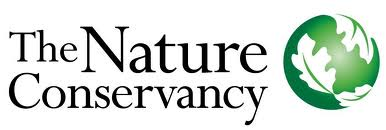
The Charity that Defied Expectations -- on a Budget!
This article was written by guest blogger Brock Warner. Brock is a fundraiser for War Child Canada & US, as well as a TEDx speaker on philanthropy, a blogger, and volunteer with the AFP Greater Toronto Area chapter.
 If you’re a regular follower of this blog, you’ll know that we’ve taken a close look at a chapter of The Nature Conservancy before. The Connecticut chapter has had their time in the spotlight, and now we shift our focus to the Illinois chapter.
If you’re a regular follower of this blog, you’ll know that we’ve taken a close look at a chapter of The Nature Conservancy before. The Connecticut chapter has had their time in the spotlight, and now we shift our focus to the Illinois chapter.
The Nature Conservancy in Illinois has been protecting over 80,000 acres of important lands and waters for more than 50 years. An impressive feat for any environmental organization. Despite having accomplished so much for the region, low brand recognition is still a challenge for the organization trying to stand out in a crowded charitable marketplace.
When the chapter prepared to launch its Design for a Living World (DFLW) art exhibit and gala this past year – featuring a commissioned piece by Christien Meindertsma using Illinois’ native prairie grass to bring together art and nature in a beautiful way – the staff knew a well-planned integrated, multi-channel marketing approach was the ticket to success.
The team also understood that the audience for this exhibit and gala would be a tech-savvy crowd that needed to be reached with the latest in marketing and advertising. Those channels included:
- A DFLW microsite (in English and Spanish)
- A mobile DFLW microsite with custom QR code
- In-depth audience research and analytics
- Chic print materials
- Earned media exposure
- Targeted online display ads (in English and Spanish)
- Mobile compatibility
- Social network reach
- In-city displays
Just as impressively, the chapter team set out without agency support, and were targeting an audience composed largely of residents of Chicago where the chapter does not have a physical presence to serve as a reminder of their work.
If you can’t tell by now – there wasn’t much working in their favour.
Nonetheless, this resourceful team pushed ahead. First, the group secured the location of Lurie Garden in Chicago’s prominent Millennium Park to highlight a 72-photo display by one of the DFLW artists. The exhibit also displayed a custom QR code that directed to the DFLW mobile website while capturing mobile numbers so that event updates and reminders could be sent via SMS. Ultimately, this pop-up exhibit set the stage for DFLW in Chicago and acted as a teaser for all of the other marketing components about to roll out.
So, how did the team’s efforts pay off?
- DFLW at The Field Museum drew an estimated 68,000 visitors.
- The photo exhibit drew more than 700,000 visitors.
- The DFLW website had 1,000 visitors per month (more than double the number of visitors to any single page in previous years).
- Print and online media had 5,220,093 impressions.
- Broadcast coverage was earned on WTTW (PBS), WGN, WMAQ, LX-TV and other broadcast television and radio outlets measuring millions of impressions.
- Advertising on the WMAQ website yielded 1,811,399 impressions.
- Other online ads yielded nearly 480,000 impressions.
- Print advertising yielded nearly 200,000 impressions. The signature fundraising gala event raised $240,000!
When I hear about any organization achieving results like this without agency support or strong brand recognition, it is proof in practice that strategic integrated marketing for nonprofits of any size can be an effective tool for engaging new audiences, and raising more money.
Share, Like and Post | | Article Link | CommentAre Your Silos Costing You Money?
This post was written by guest author Chip Grizzard, Chief Executive Officer, Grizzard.
I’ve written several blogs on organizational silos and why it is important to break them down in order to maximize your fundraising. According to a blog by Giselle Abramovich, “There are more ways than ever for marketers to reach consumers. That’s put more pressure than ever on brands to come up with integrated approaches, a topic that’s been hot in the marketing industry for years. The key for brands looking to take an integrated approach is to have strong collaboration and communication between teams.
Couple this with the fact that blurry lines can exist between who owns each channel, and you can see how brands appear to have disjointed marketing efforts. Because of culture, budgets and structure, each function is isolated and measured on its own results. Each department has different structures driving their decisions, and there are no incentives to collaborate. Today, more than 70% of first-time donors check out an organization’s website before donating. Yet, many organizations still have not integrated their online and offline messages.”
An integrated approach ensures that all the touch points work together to deliver a consistent branded experience to the donor. This can lead to a better donor experience, increased loyalty, and better campaign results. Check out this article on our work with the Michigan Humane Society.
The organization broke down its silos, accepted a common goal, shared budgets, and “That determination paid off in a big way. Just through direct mail, MHS brought in about 4,800 brand-new donors, a 148-percent increase. In addition, 1,000 lapsed donors were reactivated. Through May 31, the value of those 4,800 new donors was $172,000. At the same time, website traffic during the campaign more than doubled, and online revenue increased by 28%. MHS also increased its overall revenue by 8.6% and grew its active donor file by almost 13%.”
Do you need to break down your silos? It’s costing you money the longer you wait.
Share, Like and Post | | Article Link | Comment
Physicians Bring Life Back to a Dying Appeal
This article was written by guest blogger Brock Warner. Brock is a fundraiser for War Child Canada & US, as well as a TEDx speaker on philanthropy, a blogger, and volunteer with the AFP Greater Toronto Area chapter.
 When the Physicians Committee for Responsible Medicine’s (PCRM) spring appeal showed declining results for several years in a row, it was obvious that a complete overhaul of the campaign was in order.
When the Physicians Committee for Responsible Medicine’s (PCRM) spring appeal showed declining results for several years in a row, it was obvious that a complete overhaul of the campaign was in order.
Since 1985, PCRM has influenced advancements in medicine and science, and has served as an advocate for preventive medicine and higher ethical standards in research. With member support, they’ve successfully promoted alternatives to the use of animals in research, and have convinced more than 95% of U.S. medical schools to stop using live animal labs.
In the past, the spring appeal consisted of a stand-alone direct mail piece urging donors to support PCRM’s efforts to reduce live animal testing. Various package formats, themes and content had been tested, but nothing worked. PCRM had to come up with a more compelling appeal.
So what was their new prescription for success? An integrated appeal that asked more of their donors than ever before.
Here are the campaign’s three main ingredients:
- A high-touch direct mail package
- A Facebook engagement strategy
- A three-stage email campaign
To make sure the direct mail wouldn’t go unnoticed, PCRM constructed a highly personalized, donor-centric certificate package. It put the donor first by thanking them for their support and giving them a visible token of PCRM’s appreciation. The gamble on a bigger package paid off -- a 7.16% response rate was 91% higher than the previous year!
Next came a strategic Facebook engagement strategy supported by the first of a three-stage email campaign. What PCRM knew from past e-appeals was that an outright ask wasn’t likely to work with their audience. So, they started with a request for supporters to support them on Facebook and post a message on their page. By the end of the campaign, over 300 people posted on PCRM’s Facebook wall.
The remainder of the email campaign was where the fundraising heavy lifting took place. Email #2 was a direct ask to support the spring appeal, and the third was an urgent appeal to all non-responders within a few days. All in all, the email response was 79% higher than projected, and the revenue was 137% higher than projected!
Now, PCRM has a healthy spring appeal on their hands that exceeded revenue projections by a tremendous 92%.
Great job PCRM – a great example of integrated marketing at work!
Share, Like and Post | | Article Link | CommentBringing in the Season with Integrated Marketing
This article was written by guest author Tiffany Crumpton, senior marketing manager for CRM solutions at Blackbaud.
 When you think of The Salvation Army, you immediately picture a bell ringer with their red kettle in front of your favorite store during the holiday season. While the Red Kettle is The Salvation Army’s most successful fundraising campaign, they knew donors were turning to the Internet to make philanthropic choices. So, the head of The Salvation Army, Linda Bond, issued a challenge to her organization to embrace new technologies and make it easier for donors to contribute.
When you think of The Salvation Army, you immediately picture a bell ringer with their red kettle in front of your favorite store during the holiday season. While the Red Kettle is The Salvation Army’s most successful fundraising campaign, they knew donors were turning to the Internet to make philanthropic choices. So, the head of The Salvation Army, Linda Bond, issued a challenge to her organization to embrace new technologies and make it easier for donors to contribute.
Traditionally, gifts were given anonymously through handfuls of change placed in the kettles. A new online approach would ensure that the organization could track their donors, obtain vital information and reach the next generation of supporters. “We need to see all the people who engage with us in a new way. This person responds to direct mail; this one drops off clothing at one of our addiction centers; this one volunteers. We used to put them all into separate silos. We now realize that people interact with us in so many different ways, and we’re preparing for a future where they will interact even more with us,” says Dean Feener, The Salvation Army USA Southern Territory’s Director of Mission Information Systems.
The organization began with the knowledge that a major part of online success was integrating multiple tactics, such as website, social media, mobile outreach and peer-to-peer fundraising. It decided to enlist Blackbaud’s online and fundraising solutions for support, and found that embracing new technologies was invaluable. As a result, The Salvation Army’s presence online is now even superior to many organizations in the for-profit sector, spelling a significant paradigm shift in the way charities reach out to and communicate with supporters.
To learn about specific tactics the Salvation Army used, download the fall 2012 edition of the npENGAGE digital magazine.
Is the Root Problem Silos or Measurement?
 This post was written by guest author Chip Grizzard, Chief Executive Officer, Grizzard.
This post was written by guest author Chip Grizzard, Chief Executive Officer, Grizzard.
Organizational culture, budgets and structure are usually aligned around each channel of communication instead of the donor. As a result, each department has different goals and strategies that drive its decision making, and there are usually no incentives to collaborate. When mail was the only channel, there were no problems. But, as each new channel was added to the mix, a new department was created.
Most organizations either don’t recognize the challenges with a siloed organization, or they don’t want to go through the pain of addressing people, technology, culture, turf wars, budgets and incentives. Unfortunately, the more markets fragment, the more a siloed approach will negatively impact results. Maybe there is a better way to gain buy-in to a re-organization, and it starts with changing how we measure results.
According to the Adobe Digital Index Report, marketers are not giving channels the credit they deserve. “The assumption that the marketing channel most responsible for a consumer’s behavior is the channel that the consumer last touched before a visit or donation is called last-click attribution. Last-click attribution became widely used in the early days of e-commerce….But the digital paths consumers (and donors) take are rarely this straightforward.”
“If the consumer’s (donor’s) path to purchase (donating) was even longer and involved multiple channels -- as it often does -- accurately attributing credit to each site (touch point) along the path becomes very challenging. Marketers are (Grizzard is) developing a sophisticated cross-channel attribution model to address this complexity.” Grizzard’s model will better track cross-channel promotions, show how one marketing effort impacts the response through another channel and will allow organizations to better allocate marketing dollars to channels and activities that drive response.
Once ROI is measured by the channel that most influences a gift versus the channel the donor last touched, I think organizations will begin to change how they allocate budgets. That could be the first step to better measurement, improved collaboration and the elimination of silos.
Please share your thoughts through the comments link below.


















